Newgrange passage tombs, a prehistoric monument in Ireland, built during the Neolithic period around 3000 BC to 2500 BC. It is older than Stonehenge or the Giza Pyramids.
Baltinglass Hill is one of the world’s most important archaeological sites consisting of what many believe to be an ancient observatory, a ruined stone circle, and structures which up until recently were called ‘tombs’ but are now much more likely to be ceremonial sites aligning the earth to the stars.
There are also structures and huge rectangular pillar-type slabs protruding from the earth around the ruins, some containing carvings which cannot be seen properly because they are still buried. These unexamined stones stretch across and down through the fields and woods from Baltinglass and lead towards Boleycarrigeen Stone Circle.
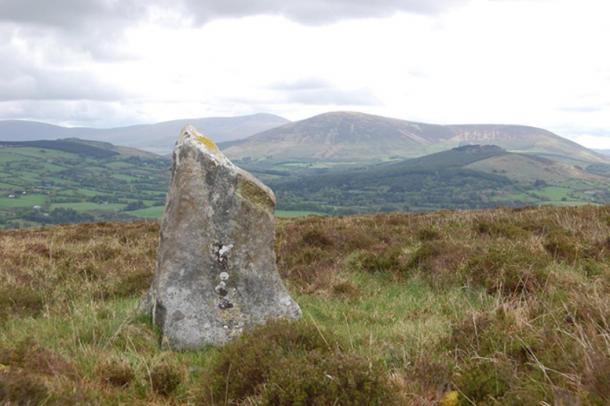
Stone at Baltinglass Hill, Wicklow, Ireland. (Photo © David Halpin)
Links to Stellar Gods and Goddesses
At the foot of the Baltinglass complex in the opposite direction lie what may have once been huge entrance stones inscribed with markings that look similar to middle-east and Eurasian carvings.
Perhaps most impressive, in terms of what we can currently examine, is a magnificent ceremonial stone basin within one of the grottos at the pinnacle of the hill. Perhaps this granite font had a shamanistic purpose and was filled with psychoactive substances and would have been consumed during ritual ceremonies. This would also align to particular constellations illuminating the hillside where part of the astrotheological belief systems of the Druids meant that a particular star or astral body would infuse a ritual preparation with its link to stellar gods and goddesses.

(Photo © David Halpin)
Initially associated with Hill Forts, Baltinglass is now proving to be a much more enigmatic and important group of structures.
A common misconception amongst many people is that the Celts were the builders of Ireland’s great stone circles and monuments such as Newgrange, but this is not the case. The Celts arrival in Ireland, commonly agreed to be roughly 500 BC, is closer in time to us today than it is to the construction of Newgrange, for example.
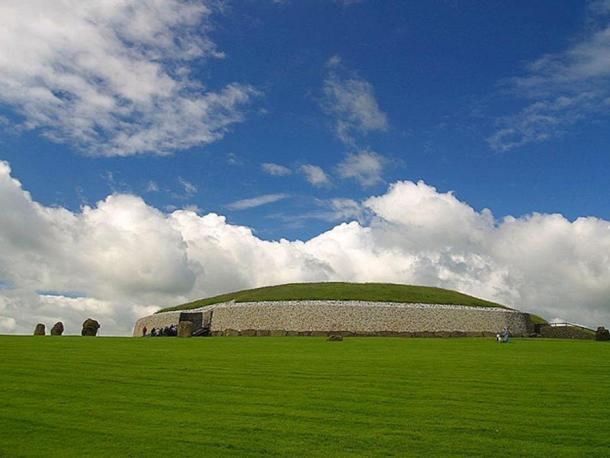
Newgrange passage tombs, a prehistoric monument in Ireland, built during the Neolithic period around 3000 BC to 2500 BC. It is older than Stonehenge or the Giza Pyramids. (Public Domain)
Many people in Ireland around 3500 BC were in fact from the southern Mediterranean and Eurasia which was proven as recently as December 2015 by Trinity College, Dublin and Queens University, Belfast.
Tantalizingly, a discovery by Dr. Marion Dowd, an archaeologist at IT Sligo, and Dr. Ruth Carden, a Research Associate with the National Museum of Ireland has shown that Ireland was populated much earlier than initially believed, and this allows us to anticipate much more exciting discoveries in the future in relation to who Ireland’s first people actually were.
- Was Neolithic Silbury Hill Designed as a Welcoming Home for Omnivorous, Upwardly-Mobile Earthworms?
- Questions of Identity: Who are the Europeans?
- Irish Lore Keeper gives Dire Warning: US Company will be Cursed if Ancient Fairy Fort is Destroyed
Perhaps many of Ireland’s stone circles and monuments such as Baltinglass do not belong to the Neolithic at all and in fact connect more to the time of Gobekli Tepi in the Mesolithic; the DNA certainly allows for this possibility; in fact, it positively screams it out at us. However, the question would then have to be asked: do we have any similar themes or alignments to back this theory up?
Gobekli Tepe
Gobekli Tepi is currently dated to before 9000 BC, but with earlier levels still to be excavated this date will be pushed back in the near future. Currently, there are two main cases for constellation alignment; Orion and Cygnus.
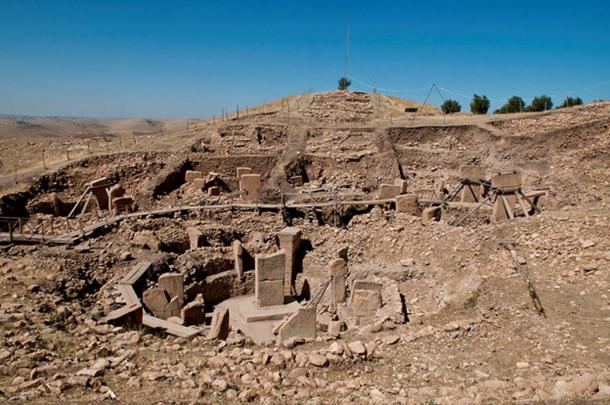
Gobekli Tepe, found in the Southeastern Anatolia Region of modern-day Turkey, has been dated to before 9000 BC. (CC BY-SA 3.0)
Another reason to abandon the hill fort association is that Baltinglass Hill has no water supply, no weapons have been found, and evidence shows the populations did not fight in the way we are accustomed to seeing in movies, such as storming a structure from below. In fact, populations at this time were quite fragmented, and it is estimated that the population in Ireland was roughly 100,000 people, which is aligned to levels throughout the Neolithic.
Perhaps the most telling factor of all when it comes to the importance and breadth of Baltinglass as a ceremonial center is the extension of further stone circles and Dolmens overlooked by the hill itself.
Potential alignments exist at the circles of nearby Boleycarrigeen, Castleruddery, and Athgreany. A further unexplored alignment can be suggested at Haroldstown Dolmen where Baltinglass Hill and Boleycarrigeen stone circle are framed within the Dolmen portal itself.
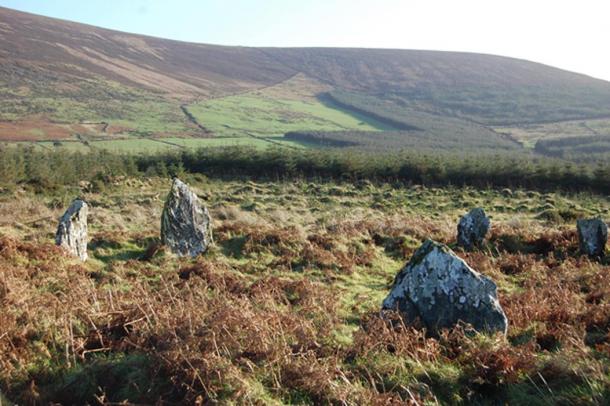
Boleycarrigeen Stone Circle (Photo © David Halpin)
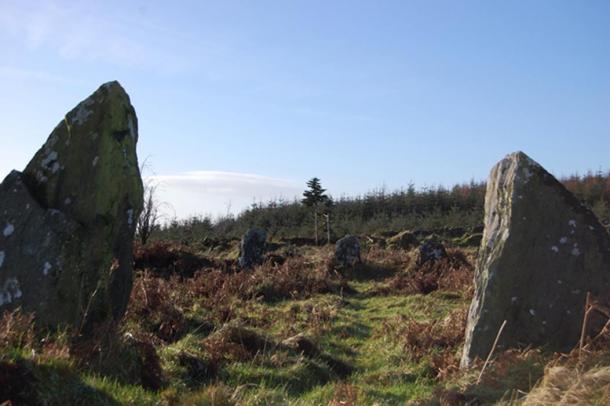
Boleycarrigeen Stone Circle (Photo © David Halpin)

Castleruddery Stone Circle (© David Halpin)
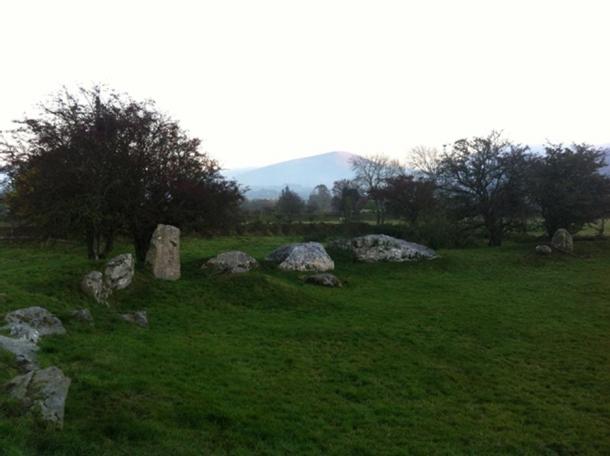
Castleruddery Stone Circle (© David Halpin)
The Move to Tombs
As is typical for sites which were forgotten for thousands of years and then rediscovered by later settlers, Baltinglass began to be used for burial purposes when it’s ritual and astronomical function had been lost.
When a small excavation was conducted in 1934, evidence of later cremations of at least three adults and a child were found. Also discovered were carbonized hazelnuts, wheat grains, and a saddle quern point.
- Howling Against the Moon: The Last Wolves of Ireland
- Thoth’s Storm: New Evidence for Ancient Egyptians in Ireland?
- The Exceptional Kokino Observatory – Ancient Megalithic Site, Holy Mountain
Current dating places some of the Baltinglass structures at 3300 BC but this is expected to be revised to an even older date in the future. Our main problem of course is that carbon dating can only give us the date of the material on the stones and not the stones themselves. Ashes and bone were probably placed within the structures long after its original ritual purpose was forgotten.
Celestial Alignments
Local historian Turtle Bunbery has commented upon the pole star alignment on the summer solstice but there is potential new evidence for alignments with Cygnus and Ursa Major, which would be further proof of a connection to Newgrange which has had its Cygnus alignments well documented in recent years. My own research using computer software shows an alignment with Ursa Major to the north and Cygnus to the west at dawn on June 21st—the summer solstice.
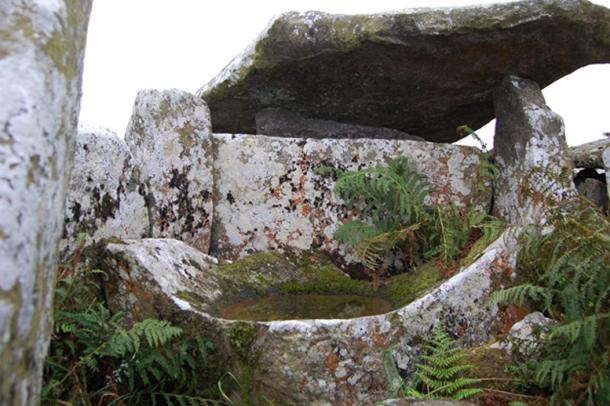
Stones at Baltinglass Hill. (Photo © David Halpin)
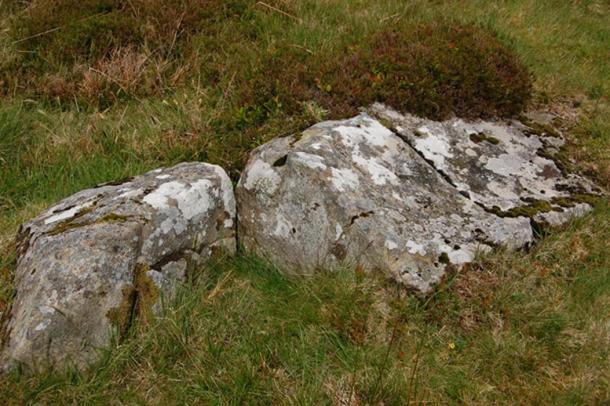
Stones at Baltinglass Hill. (Photo © David Halpin)
However, with the sky mapping technology available to us today we can rediscover the alignments that took place on solstices and equinoxes in the past, as well as being able to use software to calculate star rises and constellation positions that connect to the site, irrespective of precession.
Could Baltinglass and Boleycarrigeen perhaps point to alignments linking these sites to the age of Taurus?
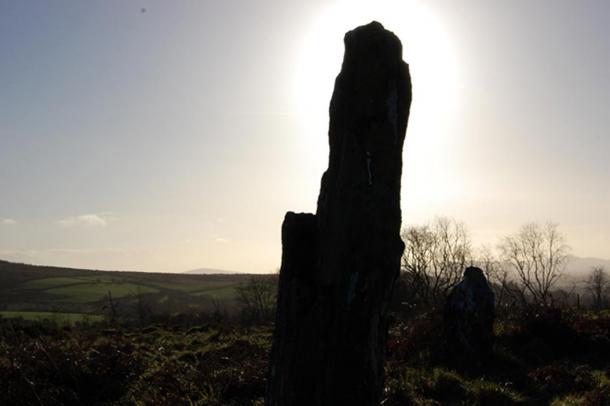
Stones at Boleycarrigeen (Photo © David Halpin)
Coincidentally enough, Boleycarrigeen actually means the ‘bull grazing in stones’ and one of Ireland greatest mythological tales, The Tain, is about the theft of a legendary bull and also has many parallels and allegories relating to the passing of one astrological age into another.
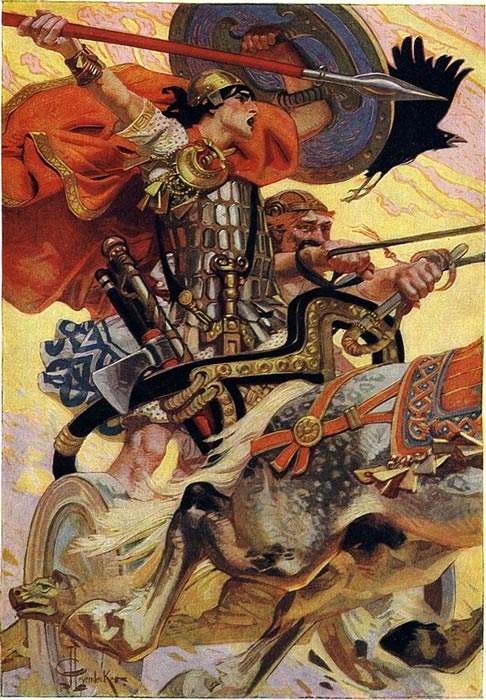
Táin Bó Cúailnge, commonly known as The Cattle Raid of Cooley or The Táin, is a legendary from early Irish literature. Illustration of Cú Chulainn in battle. (Public Domain)
Currently, Baltinglass lies exposed and mostly unexplored, particularly the satellite stones and ruins which up until recently were covered by woodland.
Frustratingly, the potential connections to visually aligned nearby sites remain ignored, so the purpose and ritual significance of the chosen landscape is still a mystery.
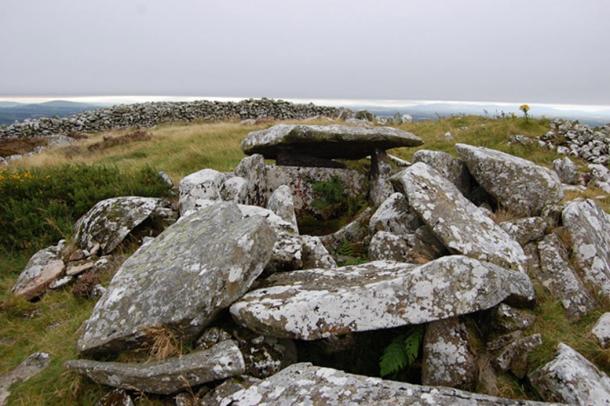
Baltinglass Hill site (Photo © David Halpin)
Like Gobekli Tepi, many structures connected to the site remain buried and traverse what must have been seen as a sacred region connecting land and sky, stone and star for the enigmatic builders. Perhaps one day, after careful and considerate excavation and exploration, we will know more about Baltinglass and its lost astronomical and ceremonial purpose.
Top Image: Baltinglass Stones – connected to Turkey’s Gobkeli Tepe? (Photo © David Halpin)
By David Halpin
Updated on December 14, 2021.